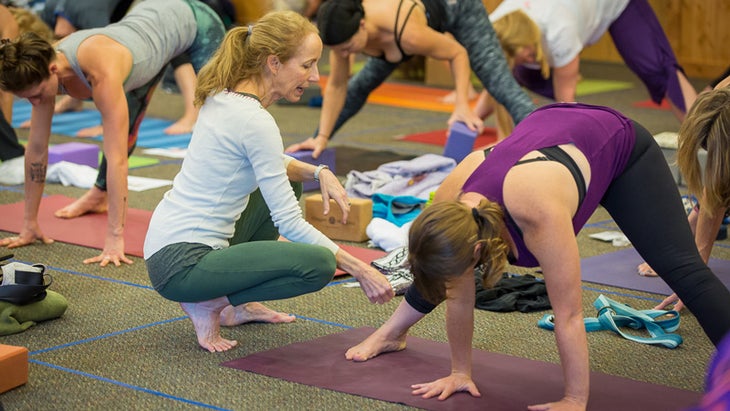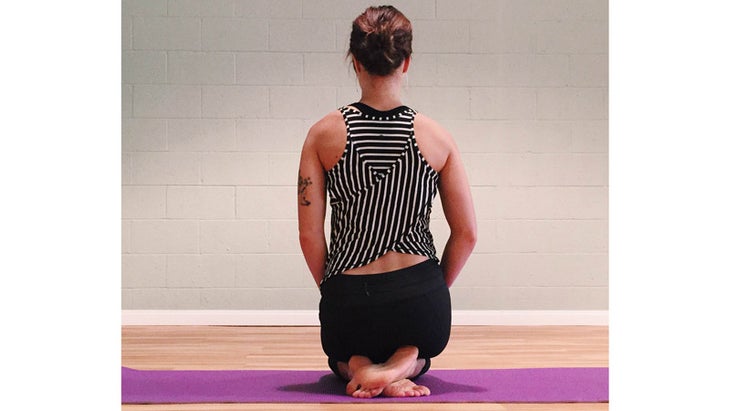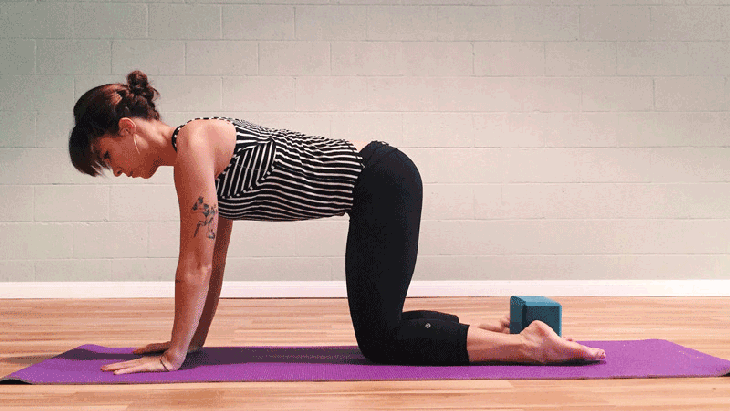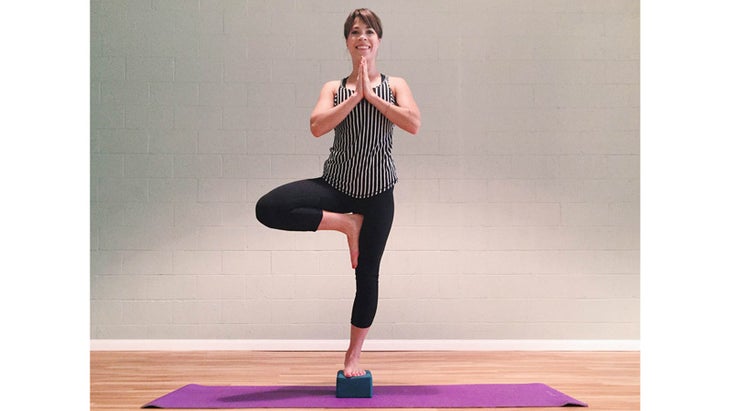Heading out the door? Read this article on the new Outside+ app available now on iOS devices for members! Download the app.

Our writer spent a day with Annie Carpenter at YJ LIVE and came away with a newfound respect for the architecture of the foot. Use this sequence as your owner’s manual.
I recently had the opportunity to study the anatomy of the feet with Annie Carpenter at Yoga Journal LIVE! Colorado in Estes Park. (Get tickets for the next New York City yoga event on April 19-22, 2018.) The full-day workshop was rich in information and detail, and one concept stood out clearly: the human foot is an incredibly complex and sophisticated piece of design.
The Functional Design of the Foot
The functionality of the foot relies on both tension and flexibility. As such, it’s a wonderful representation of sthira and sukha: the necessary balance of steadiness and ease. Tension in the arch of the foot is what gives us speed, the spring in our step as we walk and run. This arch is also a shock absorber, however, and too much tension leads to instability: Think of a tennis racket that has been strung too tightly, creating an overly taut surface with no elasticity and give.
The Consequences of Imbalanced Feet
Keeping all this in mind, we can begin to see how an imbalance between stability and flexibility in the feet can create problems elsewhere in the body. The anatomy of the feet is closely connected to the health of the lumbar spine, and floppy, collapsed arches can be the cause of an achy low back. Conversely, excess tension is linked to inflammation in the soft tissues of the arch, a painful condition known as plantar fasciitis.
See also Ease Low Back Pain: 3 Subtle Ways To Stabilize the Sacrum
Foot-Stabilizing Muscles To Know
Because our feet are such tidy, compact bundles of bones, there isn’t much room for housing large musculature in the foot itself. Instead, most of the muscles controlling the feet are in the calves and shins and connect to the feet via a network of tendons. This presents an interesting challenge: In order to refine the actions of the feet, we need tap into awareness and engagement in the lower leg. The peroneus longus, specifically, plays a major role in stabilizing the foot. This long muscle runs down the outside of the calf to the outer ankle. From there its tendon weaves under the sole of the foot and attaches in two places at the inner arch. The peroneus longus helps maintain the transverse arch of the foot, as well lift the inner and outer arches. These actions, when combined in a mindful and balanced manner, allow the leg to steady itself on top of the foot, particularly in one-legged balancing poses.
See also 11 Calf and Forearm Openers
4 Poses To Fine-Tune Foot Stability
Use these poses to encourage both flexibility and strength in the feet.
Vajrasana (Thunderbolt Pose), variation

From sitting on your heels, widen the knees so the big toes touch but the heels are slightly apart. Place the instep of your right foot directly onto the arch of the left foot (your right knee will be further back than the left). Bring the knees back together and slowly sit back on your heels, allowing the top of the right foot to press into the left arch. This area can feel very, very tender! Stay here for 8-10 breaths (or however long feels manageable), working up to longer holds. Allow the tension to release gradually; you can also lean forward to moderate the intensity of the pose. Repeat on both sides.
See alsoBest Exercises for Healthy Feet
Tabletop with a Block

In tabletop position, place a block on its medium level, parallel to the back of your mat, between your ankles. Your feet and knees should be approximately hip-width apart. From hands and knees, press the inner and outer edges of both feet down evenly. Begin to hug the outer shins and ankles towards the block. You should feel the outside of the calf (peroneus longus) start to fire. Try not to let the pinky edges of the feet lift away from the mat or the heels roll in! Take a few slow rounds of Cat-Cow, carefully maintaining all the activity in the feet and lower legs.
See alsoTreat Your Feet: At-Home Foot Spa
Vrksasana (Tree Pose), variation

Destabilizing the standing foot helps to tune into the steadying actions of the lower leg, so a foam block will be more challenging than cork or wood. Standing on a block, make your way into Tree Pose, taking care to ungrip your toes. Divide your weight evenly between the four corners of your standing foot: big toe and little toe mounds, inner and outer heel. Hug the outer ankle in to activate peroneus longus and lift the outer arch, maintaining the lift of the inner arch as you do so. The entire foot and lower leg should feel very active. Start by holding for 6–8 breaths on each side, or however long you are able to maintain the engagement in the foot and calf.
See alsoHow to Firm Feet for Balance Poses
Warrior II Pose (Virabhadrasana II)

Begin by allowing the back thigh to roll in slightly. This will facilitate deeper external rotation in the front leg. Focus on the front foot: Roll onto its pinky edge, exaggerating the lift of the inner arch. Keep the pinky edge firmly on the mat, then press the big toe mound back down (this will bring the shin to vertical). Keeping the inner arch lifted and active, hug the outer ankle in as you engage peroneus longus and feel a subtle rise in the outer arch. The big toe and pinky edges of the foot should feel balanced and active. Check in with the back of the foot: The weight should also be evenly distributed between the inner and outer heel. Hold for 4–5 breaths and switch sides.
See alsoFocus on Your Feet: How to Improve Balance and Prevent Injuries
About Our Writer

Jenni Tarma is a Los Angeles-based yoga instructor, long distance runner and CrossFitter. She is a Certified Yoga For Athletes teacher (via Sage Rountree) and loves working with athletes of all varieties, as well as leading traditional vinyasa classes. Find her on: Instagram @jennitarma and www.jennitarma.com